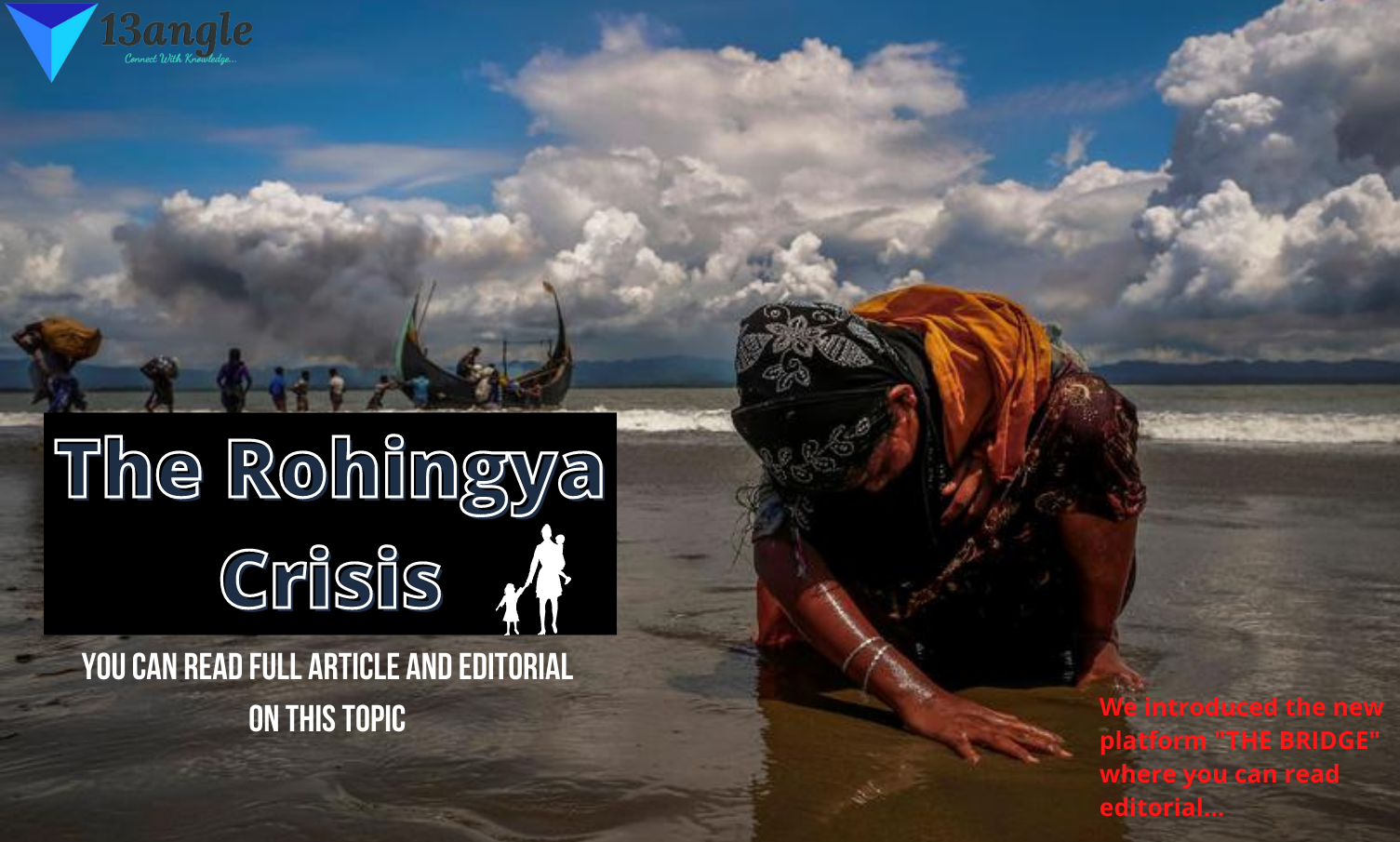- Umang Sagar
- National Issue, Recent article
The Rohingya Crisis

Introduction
- Reported as the most oppressed and victimized people on earth, The Rohingyas are a group of stateless people belonging from the Indo-Aryan ethnic group, principally following Islam, residing in the Rakhine state of Myanmar, previously known as Burma. Rohingyas are indigenous to Western Myanmar with a long heritage and influence from the Mughals, Arabs, and the Portuguese. The community claims to be the descendants of the Arakanese, which was historically an independent region between Southeast Asia and the Indian subcontinent.

The Rohingya People
The present-day term Rohingya has originated from the pre-colonial and colonial terms ‘Rooingya’ and ‘Rwangya’. The Burmese term was ‘rui hang gya’ while in Bengali they are termed as Rohingya. The term ‘Rohingya’ may have originated from Rakhangya or Roshanga; which were terms of the Arakan. They are often termed as the ‘Rohingya Muslims’, ‘Burmese Muslims’ or the ‘Muslim Arakanese’. Myanmar’s government does not recognize the Rohingyas as the ethnic inhabitants of Myanmar and instead refers to them as Bengali. The term ‘Rohingya’ is contradictory today as the government of Myanmar refuses to use the term in any way. The Myanmar government forced the Rohingyas to identify themselves as Bengalis. Thus, many of the Rohingyas are oppressed of their real identities and basic human rights. The refugees simply prefer to refer to themselves as the ‘Muslim Arakanese’ or the ‘Muslims coming from the Rakhine’.
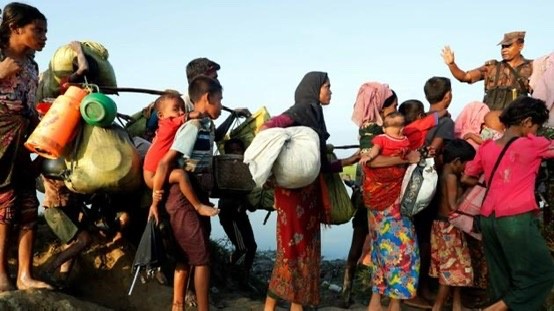
Though the United States embassy in Yangon continues to refer to them as the ‘Rohingyas’. Rohingyas have many similarities to the other ethnic groups living in the region of Burma. They have a striking similarity in their culture. For instance, the clothing worn by men and women in Myanmar has an influence on the Rohingyas. Men mostly wear Bazu that is, a long-sleeved shirt, and Longgi or Doothis, which are long fabrics covering up to the length of the ankle. Priests and religious scholars wear long tops referred to as Kurutha or Punjabi. Rohingya men sometimes, prefer to wear Taikpon or collarless jackets on top of their shirts on special occasions. In food habits they prefer ‘lucifica’; a type of flatbread and ‘bola fica’; a kind of popular and traditional rice noodle snack. Betel leaves or as known as ‘faan’ are also popular amongst the Rohingyas. The Rohingyas speak a language of Indo-Aryan sub-branch belonging to the greater Indo-European language family. The language is related to the Chittagonian part of the vocabulary spoken in the neighboring country of Bangladesh.
Though both Rohingya and Chittagong are associated with Bengali, they are not reciprocally comprehensible to each other or with the latter. As the Rohingyas do not speak Burmese they face problems in mingling up with the Burmese people. Although the Rohingya scholars have written the Rohingya language in scripts of Arabic, Urdu, Roman, Hanifi, and Burmese including.
The majority of the Rohingya people follow Islam in a variation of Sufism Islam. The fact that the Rohingyas follow Islam as their religion, is the reason why they are vastly discriminated and not considered as the citizen of Myanmar or seen as a priority by the Burmese government. There is also a minority section of Hindus amongst the Rohingyas. The government has declared no educational facility to the Rohingyas the reason why a lot of them follow the basic and fundamental Islamic studies, as they have no other option left. Mosques and Madrasas are present in the villages, men pray in the congregation while women pray at home.
History Of The Rohingyas
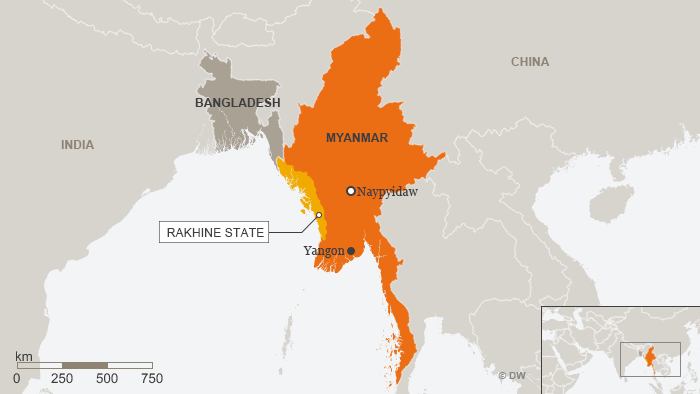
Though it is not clear who inhabited the land of Arakan at first and originally, the traditional Burmese history claims that the Rakhine have been in Arakan since 3000 BC, though there is no archeological evidence to the statement. As Arakan shares, it’s the coastline with the Bay of Bengal it was the center for the marine trade and cultural influence with the world outside since the time of the Mauryan rule in India. Muslim settlers began settling in the region of the Arakan in the 7th century. The Arab traders who were also missionaries began to convert the local Buddhist inhabitants into Islam. Besides this, The Arab merchant began marrying the local women and started settling in the region of Arakan. Soon intermarriages began taking place converting the entire Arakan into a Muslim region. The fact of Muslim inhabitation has been conveyed by Syed Islam.
Another viewpoint out that, the Rohingya history is not based on proven facts but fictional stories. The term Rohingya does not come under any regional scripts of the 4th-century texts. The term Rohingya was adopted by a few Bengali Muslim intellectuals who were descendants of settlers from the Chittagong district of Bangladesh.
Rohingya Crisis
The Rohingya people had to forcibly migrate and flee out of their own villages in the Arakan and their camps in the Rakhine state back in 2015. It was mostly due to the violence and ethnic cleansing of the immigrant Muslims in the region of Arakan in Myanmar. Most of these immigrants fled to the neighboring state of Bangladesh while the others fled to the South Asian countries of Laos, Malaysia, Indonesia, Cambodia, and Thailand. The refugees left through the Strait of Malacca in the Bay of Bengal on boats also taking the path through the Andaman Sea. It was a huge risk to escape by the sea the reason why there were claims of death during the sea voyage. Hundreds of people have been claimed dead during the voyage while traveling to the countries of Indonesia, Malaysia, and Thailand. The human traffickers were reported to be involved in this loss, as several of the refugees have been stranded in the seawater with little food and water causing their death. Bangladesh has given refuge to 32,000 registered Rohingya refugees, sheltered in camps in Cox’s Bazar. Lacks of Rohingya refugees have been displaced from Arakan’s Rakhine state with an estimate of 800,000 to 1,100,000 Rohingyas secluded into the refugee camps after the 2012 Rakhine state riots. The hunt for an escape from the violence and oppression in Myanmar caused approximately 100,000 people of Arakan to settle elsewhere in the refugee camps.
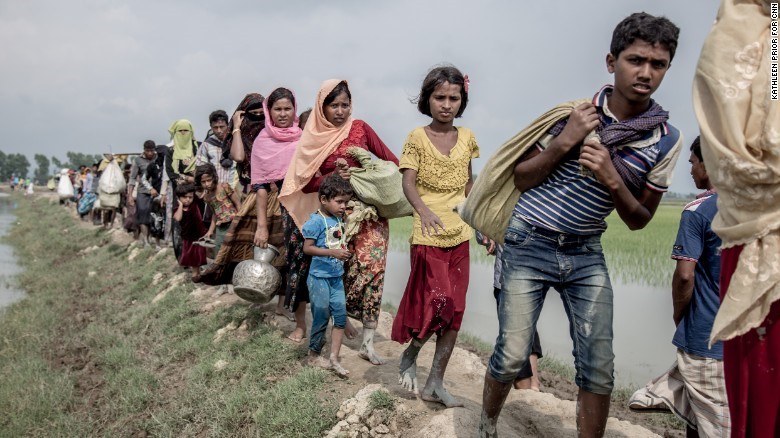
The responses to these refugees fleeing off to different countries met with different responses from the respective governments. Malaysia and Indonesia agreed to provide but a temporary refuge to the Rohingyas. According to Indonesia, they believed that only less than a half percentage were Rohingyas else the remaining were illegal Bangladeshi laborers. Thailand wished to provide humanitarian assistance to these refugees owing to not turning away the boats entering its waters. Philippines and Gambia expressed their concern regarding the people stranded on boats giving refuge to people with the Philippines accommodating 3000 of the refugees. While the Bangladeshi government wished to relocate the 32,000 registered Rohingya people who spent years in camps located on the border of Myanmar. India gave refuge to 40,000 Rohingya people, who are living in the slums of Hyderabad, Delhi, Jammu, and Nuh. While most of them are undocumented the reason why an anti-Rohingya sentiment kept on growing in India when Bhartiya Janata Party came to power back in 2014. The registered refugees got identity cards from the United Nations High Commissioners for Refugees (UNHCR) to protect the rights of these people and save them from arbitrary and capricious arrest though it was of no help as in India, Rohingyas have been reported getting arrested and put into jail even after holding cards. Thus, the authority of the identity cards did not really help the refugees too much extent. Kiren Rijiju, the Home Minister of India has commented on the fact that all Rohingya refugees are illegal immigrants and thus should be deported back. Though he did not mention when, where, and how they should be deported. The statement passed by Rijiju brought in criticism from the United Nations on which Rijiju replied back saying, India has the largest number of refugees in the world thus India does not deserve to hear any lecture about refugee control and management.
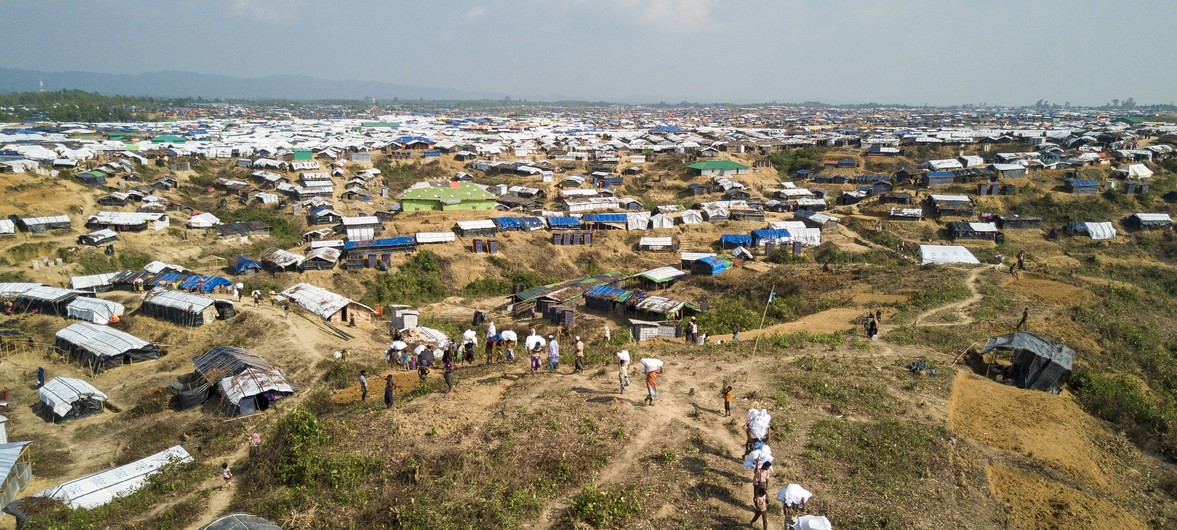
The supreme court of India also stated the fact that it will only hear pleas guided by strict points of law, any emotional point of view or argument will be avoided. On informing India about the growth of the refugees, Bangladesh received support by operation ‘Insaniyat’ under which India would provide food materials, tea, mosquito nets and other technical assistance to the Rohingyas refuged in Bangladesh. The United States’ then-President Barack Obama urged Myanmar to end discrimination against the Rohingya refugees and since then have taken 13,000 refugees to enter Chicago, a state in the United States of America.
Criticism
- Due to the discrimination and oppression of the Rohingya refugees, they face challenges in healthcare. The Rohingya children suffer from malnutrition, low birth weight, diarrhea also problems in reproduction upon reaching a certain age of adulthood. There are 224 deaths as per 1000 live births.
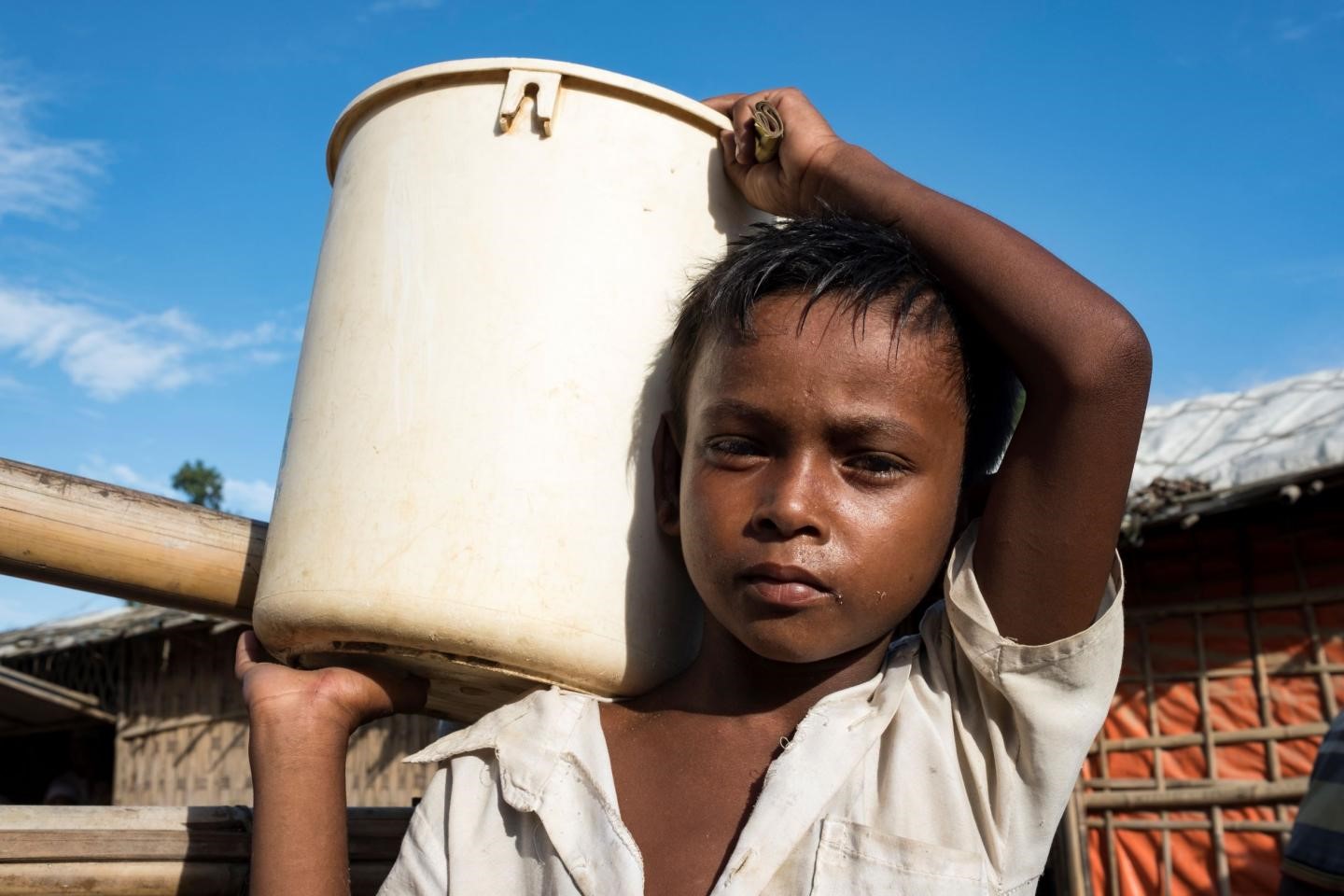
Overall, the Rohingyas are given different treatment in Burma, as the citizens of Burma hold red identity cards, but the Rohingya minorities hold white identity cards, indicating the fact that they are foreign settlers. The Rohingyas don’t have the right to sign up for the army or any activity or work related to the government. Without official permission or grant, the Rohingyas cannot move or travel from one place to another. Also, a law was imposed not to have more than two children in the Rohingya families. There are destructions and arbitrary confiscation of lands against the Rohingyas, causing forced migration to other countries. According to Amnesty International, the Rohingyas are the minorities who have faced severe human rights violations. Most of their lands have been lost to Buddhist migrators from other countries.
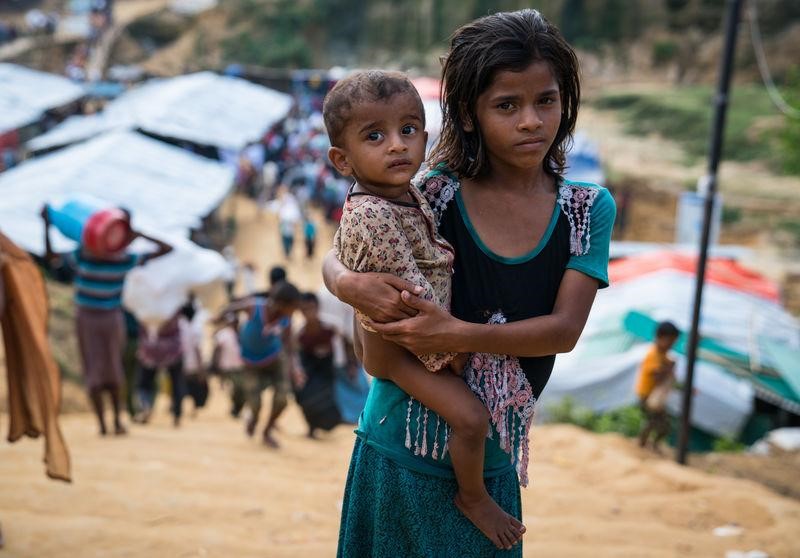
Aung San Suu Kyi, the de facto leader of Myanmar has been turning down the allegation of the ethnic cleansing, taking place in the Rakhine state. The criticism of not handling the crisis with respect to human rights and fueling bitterness between the Buddhists and the Muslims has been seen as a severe blow to the moral power of human rights. The Nobel Peace Prize Laureate agreed to defend the people in the state of Rakhine, though later that year; the Burmese government turned down the entry of the UN special rapporteur on human rights in Myanmar and denied working together for the rest of her term. Suu Kyi rejected any charges of genocide next to the International Court of Justice. It has been noticed by the UN fact-finding panel that the situation in Myanmar has not improved and is getting worse on the grounds of genocidal terms.
There have been protests in the cities of India, Pakistan, Thailand, Bangladesh, and Indonesia to stop the genocide and ethnic cleansing in the Rakhine state against the Rohingya people. There has been an authoritative discussion between Bangladesh and Myanmar to stop the genocide against the Rohingya people and help them return back to Myanmar to at least in few numbers to which no appointed group of Rohingyas agreed to return. The UN has criticized the repatriation plan as the conditions in Myanmar were unsafe for the refugees to return. Further, the refugees hailing from Rakhine showed a disregard to moving back until and unless their citizenship authority is guaranteed. The Gambia, in November 2019 filed the first international lawsuit on behalf of 57 countries. Many countries including United States, Canada, Norway, and South Korea have committed to help with humanitarian assistance.
Conclusion
The conclusion to the Rohingya crisis is still questioned but one thing is for sure that it is a case of genocide and ethnic cleansing. Though the genocide is in a subtle form in Myanmar unlike Hitler’s gas chambers, the case still remains the same. Canada has a shared interest to relocate the Rohingya refugees from Bangladesh with a real and proper resettlement program. While there is public sympathy, there is also enough economic vibrancy in many Southeast Asian and Gulf states for employment and relocation of the refugees. Though the refugees of Rohingya lack the skills needed in the 2021 economy. They are illiterate further so the reason why their relocation has become a question, in the world site as no country openly wants to accept them. The Rohingyas further had a militant group which was also a matter of question. As the group might pose a threat in many ways upon returning. The term Rohingya has also been misused by Rohingya refugees as according to the Myanmar government they are Bangladeshi Muslims, while Bangladesh refuses the fact that they (The Rohingya Muslims) belong to them. Thus, both countries are refusing to accept the lineage of the group. As one of the most deprived and some of the world’s most oppressed and persecuted minorities, the Rohingyas are denied the freedom of movement and the right to education. They have also been denied and expelled from getting a citizenship authority in Myanmar thus seen as foreigners who have settled from the region of Bangladesh. Denied getting citizenship from any country; the Rohingya refugees thus, are in grave need of humanitarian help and mercy.
Top 13 Interesting Facts About Rohingya Crisis
Rohingya refugees live in two camps situated in Cox’s Bazar, in the Kutupalong refugee settlement.
The Kutupalong refugee settlement is the largest of its kind in the world with more than 600,000 people living in only 13 square kilometers of area.
Monsoon season can bring in floods and landslides causing triggers in the overcrowded refugee areas.
UNHCR is working on providing shelter and moving families in danger, also providing health benefits to the ones in need.
UNHCR has also distributed around 83,900 shelter kits containing rope, bamboo, tools, sandbags, etc.
Food is distributed to these refugees by the world food program along with their partners including world vision.
The Rohingyas also suffer from mental health disorders due to stress from overcrowded living conditions.
The Rohingyas are culturally conservative communities who believe women and girls should stay in to be homemakers and not money makers.
The Rohingya children face a lack of protection as they have to go through neglect, abuse, sexual violence, child labor, child marriage, and other atrocities as such.
There are refugee representative leaderships around the camps with rules and functions for the strong forum, for refugee participation in camp governance.
Children between the ages of 3-14 receive no formal education as there is no access to education of any kind in the camps.
World Vision helped in setting in deep wells, latrines, handwashing stations, and bathing cubicles for the well-being of more than 200,000 refugees in 11 camps.
The World Vision also introduced child scholarships in the Ukhiya community to aim for the prosper of literacy and education.

For deep details, you can read the full article. Click the link below :



